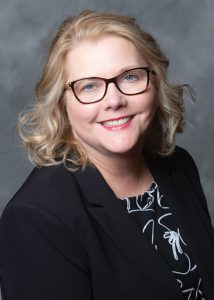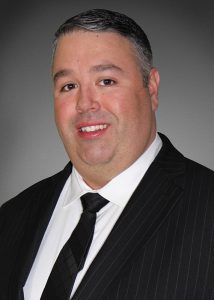Nonprofits Social Services

NONPROFITS AND SOCIAL SERVICES
A “firm” market challenges agencies
pressed to take on added risk
By Joseph S. Harrington, CPCU
Nonprofit organizations in general, and social services in particular, face a challenging environment in the post-pandemic era, as they grapple with a growing demand for their services and a tightening supply of qualified workers to deliver them.
A “firming” market for property and liability insurance only adds to their challenges.
“The market for coverage is firm,” says Mike Liguzinski, divisional president of Great American Insurance Group’s specialty human services. “Annual price increases continue to exceed regular inflation for the fourth year in a row. Capacity for umbrella limits and abuse and molestation coverage is tight, driven by a hardening reinsurance market for those exposures.”
“We anticipate the market remaining firm throughout 2023 and into the future,” says Zack Siegel, assistant vice president of distribution for Irwin Siegel Agency. “Excess limits are more difficult to retain in the standard market, requiring brokers to access the E&S market to layer excess coverage and maintain program structure once found in the standard market.
“We are also seeing a consistent flow of primary social service applications to the E&S market,” he adds. “While many of those applications are for foster care and troubled youth services, monoline excess coverage is also flowing consistently through our E&S channel.”

Mike Liguzinski
Grantors demand risk
Government grants are getting more difficult to obtain, according to Quynh Tran, program director for Care Providers Insurance Services (CPS), a division of NSM Insurance Group. To win in the competition for grants, she finds that nonprofits and social services must often agree to assume more risk.
“Grants that provide the most funding sometimes require the insured to take on higher-risk clients or operations,” Tran says. “This often includes assuming responsibility for clients with severe disabilities or mental and emotional issues, or for foster care and adoption services.”
Tran finds that grant providers are also imposing “heavy obligations” for providing transport services to frail elderly persons, persons requiring wheel-chair assistance, and youths. “This is a high-risk exposure that continues to grow as more people need assistance getting around,” she says.
Tran adds that insurance obligations are adding to the cost of using volunteers, which nonprofit organizations increasingly rely on to reduce expenses and alleviate staffing shortages.
“Insurance companies may require volunteers to go through the same screening processes as employees,” Tran says. “This can be costly and deter volunteers from donating their time. Nonetheless, this screening is critical to protect nonprofits in the event a volunteer negligently causes injury or damage.”
“Annual price increases continue to exceed regular inflation for the fourth year in a row. Capacity for umbrella limits and abuse and molestation coverage is tight, driven by a hardening reinsurance market for those exposures.”
—Mike Liguzinski
Divisional President, Specialty Human Services
Great American Insurance Group
According to Robin Stolle, area vice president of RPS Signature Programs, the program administration division of specialty insurance distributor Risk Placement Services, “One of the biggest risks is not

Zack Siegel
having appropriately trained staff to assist the clients. Hiring people without the appropriate training opens yourself up for greater risk of loss and litigation down the road.”
Staffing, auto, and residential
Combined, the strains on staffing and rising auto claim severity are hiking the overall cost of risk for nonprofit social services, says Liguzinski. “Levels of risk are heightened due to auto claim severity and less supervision, especially trained supervision, of employees and volunteers,” he explains. “Auto claim frequency and severity have both increased, and nonprofits that have employees or volunteers using vehicles are increasingly at risk.”
In response, “we are seeing many markets limit their capacity,” says Stolle. “They either don’t want to write higher limits, or the cost has gone up tremendously. We are also seeing markets that wrote social service accounts on admitted paper moving them to their non-admitted paper.
“Insurers are taking a harder look at risks with habitational exposure where residential clients are sharing a bedroom or other facilities,” she adds. “Risks with congregant exposures, such as an adult day care, are being scrutinized very closely.
“We are seeing limitations on the number of residents or program participants carriers are willing to write, so larger facilities are finding it more difficult to obtain coverage in admitted markets.”
“Reviving” old allegations
No matter how sound their current operations and risk control, many social service agencies face growing exposure to abuse claims from prior years, even decades, as states extend or eliminate statutes of limitations for claims of sexual abuse.

Quynh Tran
“Insurance companies may require volunteers to go through the same screening processes as employees. This can be costly and deter volunteers from donating their time. Nonetheless, this screening is critical to protect nonprofits in the event a volunteer negligently causes injury or damage.”
—Quynh Tran
Program Director
Care Providers Insurance Services

Robin Stolle
“Extensions or eliminations of statutes of limitations for allegations of sexual abuse have a myriad of impacts on social service organizations,” says Rich Geoghan, assistant vice president of specialty lines for Irwin Siegel Agency. “Organizations need to reevaluate their record retention policies, enhance safety protocols, and perhaps restructure their insurance coverage.”
The most prominent recent example of such a measure is New York’s Adult Survivors Act, which opened a one-year window for adults to lodge claims that they were victims of sexual abuse in the past.
“Should this type of legislation develop tail winds, as did similar statutes, it could have devastating effects on liability insurance lines,” Geoghan says. “Allowing past cases of sexual assault to be revived nationwide would undoubtedly result in a renewed firming of pricing for management and employment practices liability coverage, just as it was beginning to soften.”
“Insurers are looking at how long this exposure is going to remain on their books,” he continues. “Many are changing policy terms to provide defense coverage within limits while being cautious with the limits offered.
“If there’s a significant increase in abuse and assault claims from previous years when reviewing new business, carriers may need to consider limiting their retroactive coverage dates to limit their exposure.”
According to Tran, in states that are extending statutes of limitation for abuse claims, “carriers are either not writing coverage at all or requiring insureds to switch from claims-made to occurrence-based policies.
“For organizations that have been on claims-made forms for decades, with retro dates going back to the 1980s, this can have a huge financial impact if they must purchase tail coverage, which is very expensive, especially for abuse and molestation claims,” she says. “Organizations could lose coverage for past acts entirely if their carrier will not offer an unlimited extended reporting period.”
“Abuse ‘reviver’ statutes in more than 30 states have increased the number of abuse claims in the industry,” says Liguzinski. “This adds costs for carriers to defend suits and pay damages, and makes reinsurance coverage for abuse claims more expensive and harder to get going forward.”

Rich Geoghan
“If there’s a significant increase in abuse and assault claims from previous years when reviewing new business, carriers may
need to consider limiting their retroactive coverage datesto limit their exposure.”
—Rich Geoghan
Assistant Vice President, Specialty Lines
Irwin Siegel Agency
Property and interest rates
While interest rates are generally favorable for liability lines over the long term, in the short term rising rates have a negative effect on the value of existing bonds and stocks held by insurers. Rising rates also drive up costs of reconstruction.
So far, “property insurance is the line most affected by rising interest rates,” says Siegel. “This is particularly true for organizations involved in housing development.
“Construction loans often carry higher interest rates to begin with,” he says. “Couple that with delays in project completion due to supply chain issues, and you compound the problem of rising interest rates.”
In response, Siegel says that Irwin Siegel Agency sees some builders risk carriers implementing caps on “soft cost” coverage for the additional costs of construction loan interest incurred because of a delay in completion caused by a covered loss. He adds that rising interest rates are having an impact on premium financing.
“Increased construction costs ex-acerbated by supply chain issues are driving up the cost of building materials,” says Tran. “The result is that carriers are requiring insureds to drastically increase their building property limits.
“Insureds are looking at options to keep insurance costs down, including a shift from replacement cost to actual cash value coverage, and taking on higher deductibles,” she adds. “Carriers are requiring the addition of an inflation guard to ensure that fluctuations are captured throughout year.”
Cyber exposure
Nonprofit and social service operations have been profoundly and permanently affected by the remote work trend spurred by the COVID-19 pandemic. As a result, cyber connections and cyber risk constitute a major risk concern.
“Remote working has certainly helped organizations become more agile in providing service,” Geoghan says. “Yet we see increased cyber expo-sure as remote working continues to grow. As this continues into the future, organizations need to constantly update their security procedures and protocols to stay ahead of cyber criminals and ransomware attacks.”
Following the pandemic, “many social services have remained virtual, including counseling, wellness checks, and determination of eligibility for service,” says Tran. In-person fundraising events are finally starting to return, she adds, but organizations have had to find more creative, virtual methods to reach the general public to supplement their fundraising.
“Due to the impacts of the pandemic, social service organizations are needed now more than ever with heightened demand for their services and support, but organizations have been strained to meet this demand,” Tran concludes.
For more information:
Care Providers Insurance Services
www.nsminc.com/programs
Great American Insurance Group
www.greatamericaninsurancegroup.com
Irwin Siegel Agency
www.siegelagency.com
RPS Signature Programs
www.rpsins.com/products-and-programs/signature-programs
The author
Joseph S. Harrington, CPCU, is an independent business writer specializing in property and casualty insurance coverages and operations. For 21 years, Joe was the communications director for the American Association of Insurance Services (AAIS), a P-C advisory organization. Prior to that, Joe worked in journalism and as a reporter and editor in financial services.











